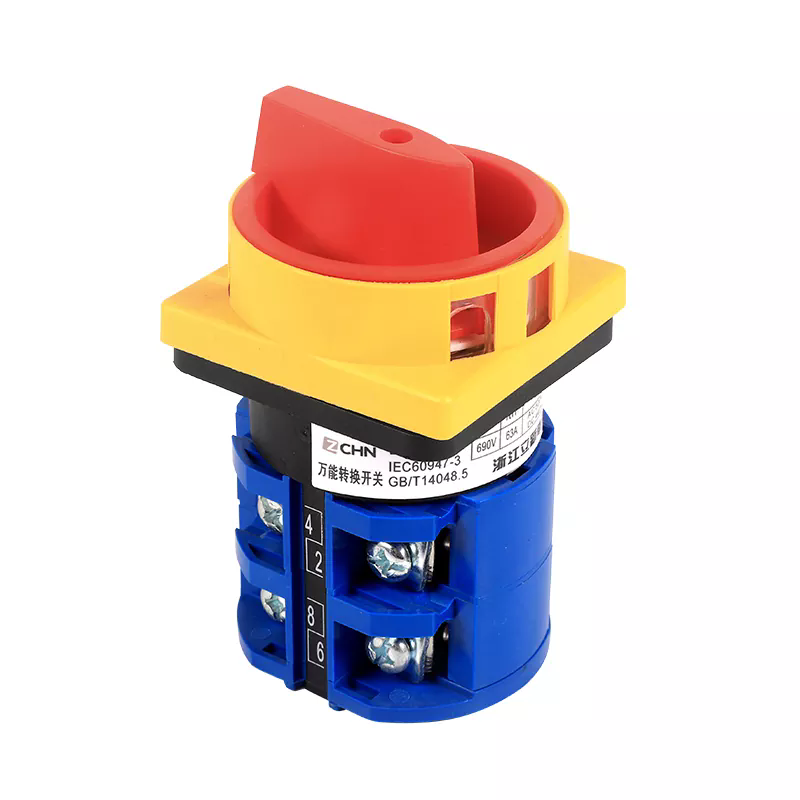How Does a Selector Switch Improve Industrial Control Efficiency?
2025-10-15
Selector switches are fundamental components in modern industrial and electrical control systems. Designed to allow operators to select different operating modes or circuits, these devices are integral to ensuring precise and safe machine operation. The versatility, durability, and safety features of selector switches make them indispensable in industries ranging from manufacturing to automation. This article explores the what, why, and how of selector switches, highlighting their advantages, technical specifications, common issues, and emerging trends.
Selector switches are not only about switching functionality—they are about operational efficiency, control reliability, and workplace safety. By examining their design, materials, electrical ratings, and operational modes, industries can select the right switch to optimize workflow, reduce downtime, and meet strict safety standards.
Key Product Parameters of Selector Switch
| Parameter | Specification/Details |
|---|---|
| Type | Rotary, Key-operated, Push-to-Select |
| Electrical Rating | 10A, 220V AC / 24V DC |
| Pole Configuration | 1-pole, 2-pole, 3-pole |
| Mounting Method | Panel mount, Surface mount |
| Contact Material | Silver alloy / Copper alloy |
| Operation Type | Momentary / Maintained |
| Degree of Protection (IP) | IP65, dust-proof and water-resistant |
| Actuator Style | Round knob, Lever, or Key |
| Mechanical Life | ≥ 1,000,000 operations |
| Electrical Life | ≥ 50,000 operations at rated load |
| Operating Temperature | -20°C to 70°C |
| Compliance | IEC60947-5-1, UL certified |
| Color Options | Red, Green, Yellow, Blue |
These specifications ensure that the selector switch operates reliably under demanding industrial conditions, maintaining electrical and mechanical integrity over prolonged use.
Why Are Selector Switches Essential in Modern Industrial Systems?
Selector switches are more than simple on/off devices; they act as control hubs in complex electrical networks. Their design allows operators to safely switch between multiple circuits or modes, thereby preventing misoperation and ensuring system reliability.
1. Operational Safety:
Industrial environments demand high safety standards. Selector switches with IP65 protection resist dust and water ingress, preventing electrical faults. Silver or copper alloy contacts reduce arcing, prolonging switch lifespan and preventing fire hazards.
2. System Flexibility:
Selector switches offer multiple operating positions, enabling a single switch to manage several functions. This versatility reduces the need for multiple control devices, saving panel space and lowering installation costs.
3. Ergonomic Control:
Actuator designs like round knobs, levers, and key-operated switches provide tactile feedback and intuitive operation. Employees can select functions quickly, even in high-pressure environments.
4. Durability and Reliability:
High mechanical and electrical life ratings make selector switches reliable for thousands of operations, reducing maintenance downtime. Their compliance with international standards guarantees consistent performance across applications.
How Do Selector Switches Enhance Operational Efficiency and Automation?
The integration of selector switches into industrial control systems enhances operational efficiency through precise control, reduced human error, and streamlined workflow.
1. Integration with Automation Systems:
Selector switches serve as manual inputs in PLC-controlled or automated systems. By signaling specific operational modes to control units, they allow seamless interaction between human operators and automated processes.
2. Reducing Error and Downtime:
By clearly marking positions and incorporating tactile feedback, selector switches prevent accidental operations. This precision ensures machinery runs in the intended mode, reducing the risk of malfunctions and production downtime.
3. Adaptable Design for Diverse Applications:
Selector switches are available in multiple pole configurations, electrical ratings, and actuator types. This adaptability allows use in motor control centers, CNC machines, elevators, and emergency shutdown systems.
4. Maintenance and Replacement Ease:
Panel-mounted designs allow for easy access, and standardized contact blocks enable quick replacements without dismantling entire systems. This minimizes system downtime and supports long-term operational efficiency.
Common Questions About Selector Switches
Q1: What factors should be considered when selecting a selector switch for industrial use?
A1: Selection depends on voltage and current ratings, environmental conditions, required IP protection, actuator style, number of poles, and operational type (momentary or maintained). High mechanical and electrical life ensures long-term reliability, while compliance with IEC and UL standards guarantees safety and global compatibility.
Q2: How can maintenance improve the lifespan of a selector switch?
A2: Regular inspection for dust, moisture, and corrosion is essential. Ensuring proper torque on terminal screws, cleaning contacts, and verifying actuator function prevent early wear. Using the switch within its rated electrical load also significantly extends its operational lifespan.
Future Trends and Technological Advancements in Selector Switches
Selector switches are evolving to meet the increasing demands of Industry 4.0 and smart manufacturing. Emerging trends include:
1. IoT Integration:
Modern selector switches can now be equipped with sensors to transmit operational status to centralized control systems. This allows real-time monitoring and predictive maintenance.
2. Modular Design Innovations:
Manufacturers are creating modular switches where contact blocks, actuators, and mounting bases can be swapped independently. This reduces costs and allows easy customization for specific applications.
3. Enhanced Safety and Compliance:
Switch designs now focus on extreme environmental resistance, including IP66 or IP67 protection and materials resistant to chemicals or high temperatures. Enhanced safety certifications are becoming standard to meet stricter industrial regulations.
4. Human-Machine Interface (HMI) Optimization:
Selector switches are increasingly being designed with ergonomics in mind. Illuminated actuators, color-coding, and tactile differentiation allow operators to make fast and accurate selections, improving workflow efficiency and minimizing errors.
5. Energy Efficiency:
Low-power and zero-arc designs are being incorporated into selector switches to reduce energy loss and improve sustainability in industrial operations.
Selector switches play a vital role in enhancing operational control, safety, and efficiency across industrial and automation applications. Their robust design, versatile configurations, and integration capabilities make them indispensable in modern control systems. From precise manual operation to advanced IoT-enabled applications, selector switches continue to evolve, driving smarter and safer industrial processes.
Lixin offers a comprehensive range of high-quality selector switches that combine durability, reliability, and advanced functionality to meet the demands of modern industry. For detailed product inquiries, specifications, or purchasing information, contact us today to discover the best solutions for your control systems.
